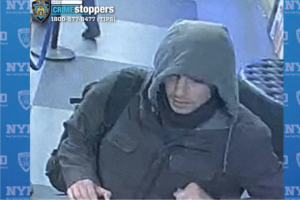
In an era where technology is becoming a critical tool in law enforcement, the role of CCTV and surveillance cameras in catching criminals has never been more pronounced. A recent incident involving 26-year-old Luigi Mangione, an alleged Italian-American mafia assassin, highlights the crucial part these devices play in bringing justice to victims and solving violent crimes.
The Incident: Captured in Shocking Detail
Surveillance footage captured the moment Luigi Mangione approached Mr. Brian Thompson, the CEO of UnitedHealthcare, on a public footpath. Without hesitation, Mangione pulled out what appeared to be a handgun fitted with a silencer and fired multiple shots at the victim’s back. The horrifying act was over in seconds, but the critical evidence was already recorded by a nearby CCTV camera.
The footage not only provided a clear view of the crime but also documented Mangione’s appearance, movements, and the weapon used. This is further evidence that every business should employ CCTV cameras at their entrances, within their interiors, and along their premises’ sides and rear ends. These details proved invaluable in helping authorities identify the suspect and establish a timeline of events.
How CCTV Helps in Crime Prevention and Resolution
The presence of CCTV cameras in public spaces has significantly bolstered law enforcement capabilities. Here’s how:
Real-Time Evidence Collection: Surveillance cameras capture crimes as they happen, providing unfiltered, real-time evidence. In the Mangione case, the footage offered law enforcement an unambiguous record of the crime.
Identification of Perpetrators: High-definition footage can reveal identifying features of suspects, such as facial characteristics, clothing, and gait. Mangione’s distinctive appearance as a handsome young Italian-American man was a key factor in his swift identification by authorities.
Building Strong Legal Cases: Video evidence is difficult to dispute in court. Prosecutors often rely on such footage to strengthen their cases and ensure that justice is served.
Deterrence: The mere presence of surveillance cameras can discourage potential criminals. However, as the Mangione case demonstrates, not all criminals are deterred, making the existence of such footage even more critical.
Surveillance Technology in Organised Crime
Crimes involving organised crime syndicates, such as the Italian-American mafia, are notoriously difficult to solve due to the secretive and hierarchical nature of these groups. Surveillance cameras serve as an impartial witness, cutting through the layers of secrecy. In Mangione’s case, the CCTV footage undermined any attempts at denial or obfuscation, providing a direct link to the crime.
But in this case this wasn’t a Mafia hit, or a left-wing hit like the attempt on Donald Trump’s life, for the suspect comes from a wealthy well-known family which owns a holiday resort and a country club in suburban Maryland.
Balancing Surveillance and Privacy
While the effectiveness of CCTV in solving crimes is evident, its widespread use raises questions about privacy and the ethical implications of constant surveillance. Governments and law enforcement agencies must balance the need for public safety with the right to personal privacy, ensuring that surveillance tools are used responsibly and within the bounds of the law.
More Cameras, More Crimes?
The Luigi Mangione incident is a stark reminder of the value of surveillance technology in modern policing. CCTV cameras, though silent and unassuming, serve as powerful tools in crime prevention and resolution. As technology continues to evolve, its role in enhancing public safety will undoubtedly expand, bringing us closer to a safer and more secure society. However, vigilance is required to ensure these tools are used ethically and do not infringe upon the rights of the very citizens they aim to protect.
